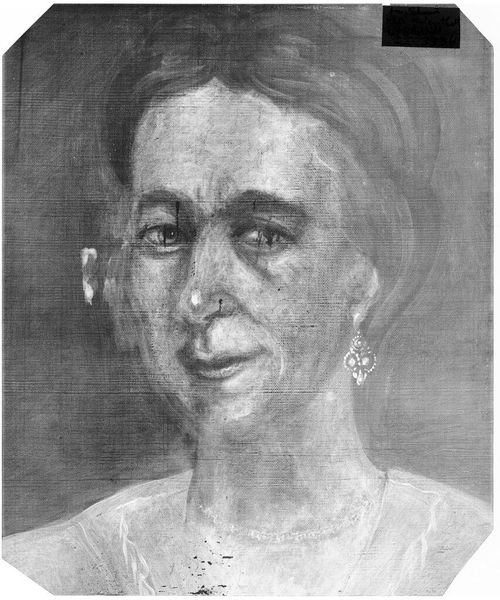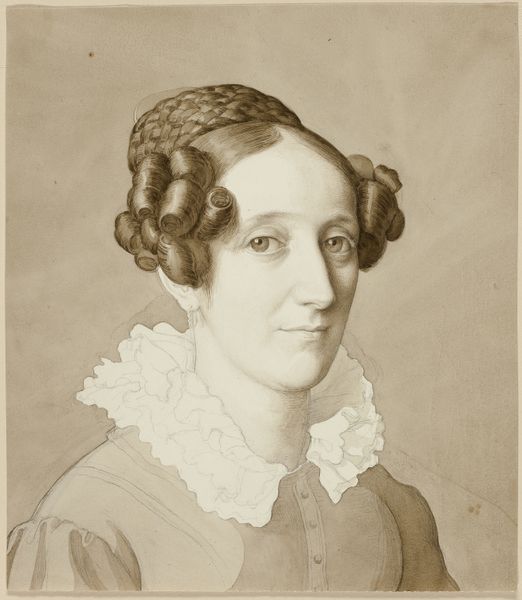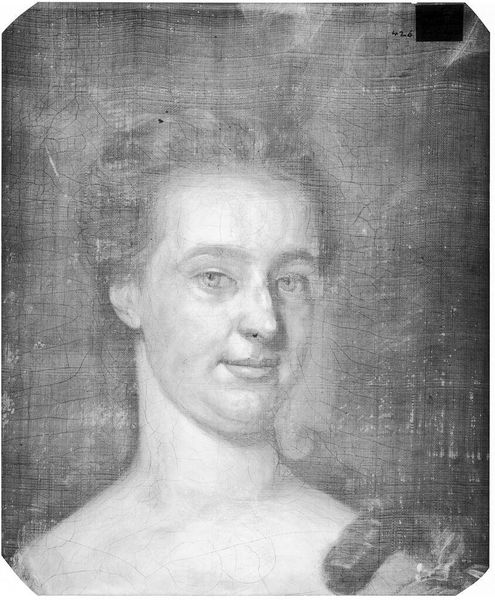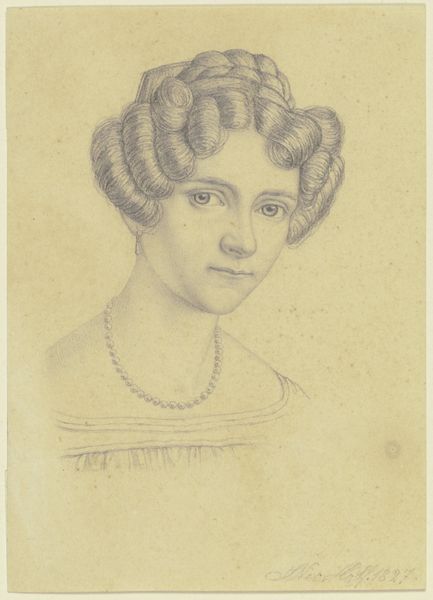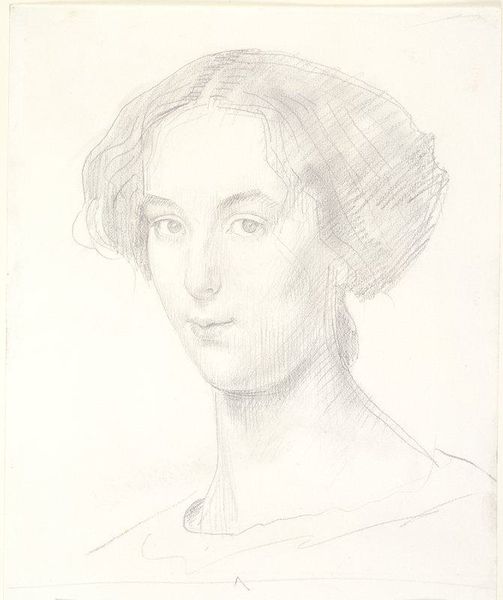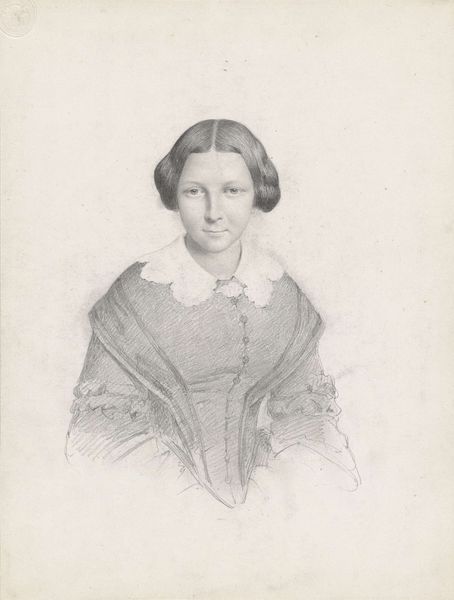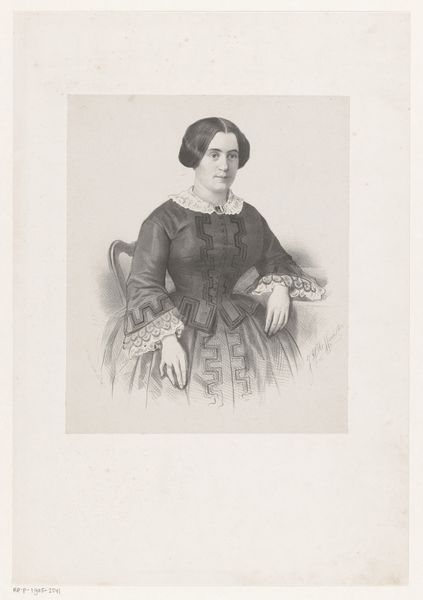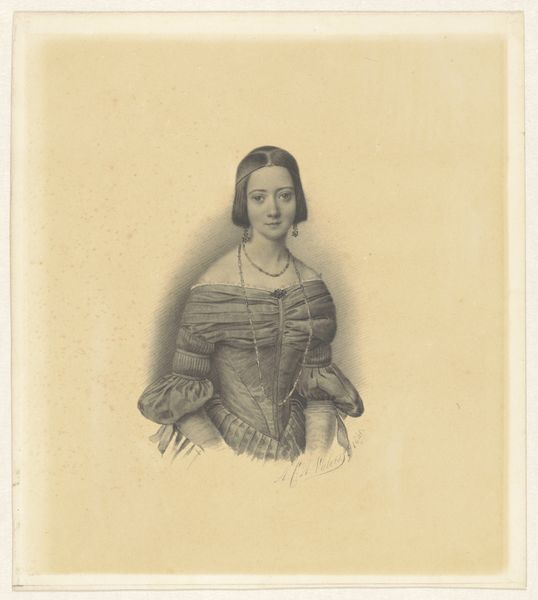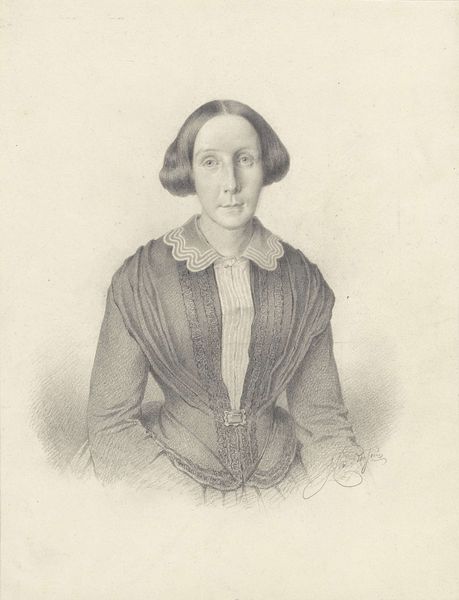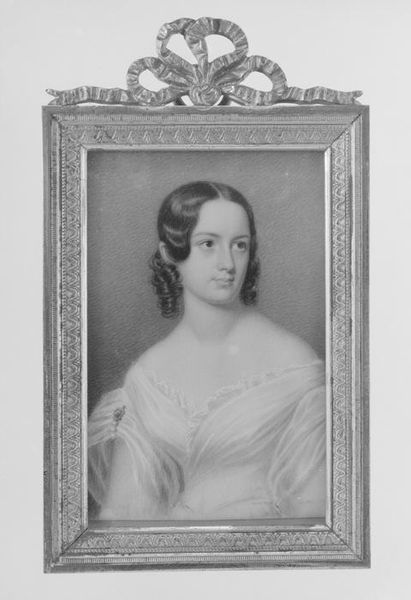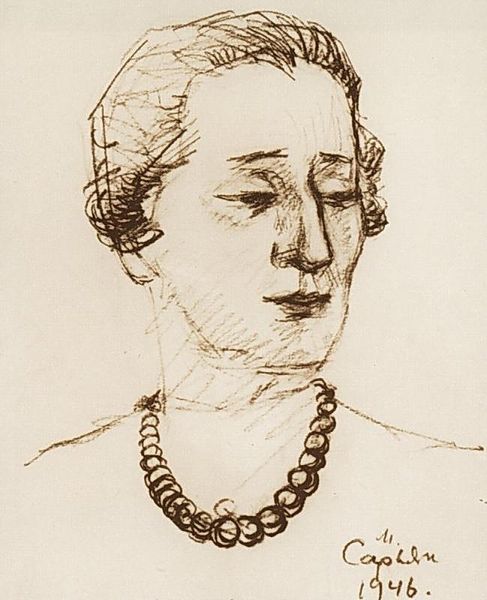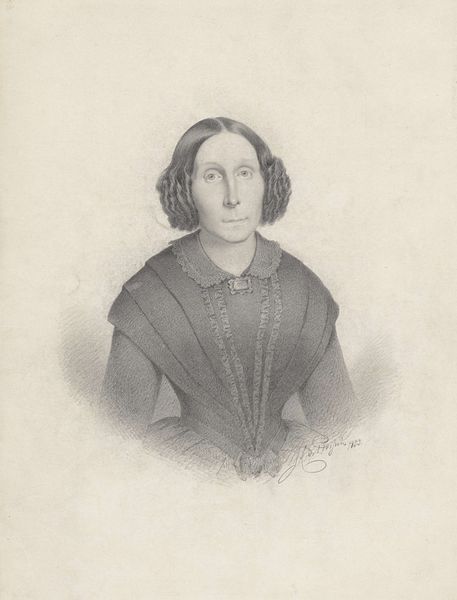
Dimensions: 57.5 cm (height) (Netto)
Curator: The work before us is H.W. Bissen’s bronze bust, "Ida Wilde," crafted in 1863 and residing here at the SMK. Editor: It's undeniably austere. The bronze casts a somber light, and the figure’s gaze feels direct, almost confrontational. Curator: Let’s consider the period, mid-19th century. Bronze casting was a complex and relatively expensive process. A portrait in bronze signaled status and permanence. Wilde's family clearly wanted to preserve her likeness in a very public way, linking her image with notions of history and legacy. The labor required to produce such a work, the skill of the foundry workers… Editor: Absolutely. The choice of bronze evokes historical connotations too. It harks back to classical antiquity, an era which frequently used bronze to immortalize leaders and mythological figures. Wilde almost appears like a Roman empress. I'm particularly struck by the medallion fastening her draped garment; the circular design often signifies eternity, perhaps nodding toward an aspiration to overcome mortality through art. Curator: Indeed. And this ties in neatly with the prevailing aesthetic of Neoclassicism that Bissen subscribed to. This movement really revived an interest in antiquity as it shifted focus towards formal simplicity, idealism, and restrained emotion. But notice the slight asymmetries? Her neck doesn't perfectly align with the central axis, the fabric drapes a little unevenly. Are these imperfections intentional, signaling something beyond cold idealization? Editor: It’s certainly more lifelike for it, more…human. I agree. The softness around her eyes suggests she carries her own weight of knowledge. Symbolically, consider the bust form itself – a truncated body, yet still bearing such a profound expression. It forces us to focus solely on her character. Curator: From my perspective, the limitations and affordances of the material had a big impact on that expression. It may also indicate the conditions of production within Bissen’s workshop, and how such a piece would be viewed as a product of skilled craftsmanship. It transcends simple representation to make her likeness resonate through texture and form. Editor: It truly captures more than just likeness; it embodies an idea of her place, her significance. It makes us ask ourselves about enduring symbolism and the meaning we create over time. Curator: Yes. Bissen’s piece exemplifies how material constraints shape meaning in ways that enrich the viewing experience. Editor: A profound contemplation on existence, communicated via a striking image of a woman and skillfully deployed iconographic codes.
Comments
No comments
Be the first to comment and join the conversation on the ultimate creative platform.
